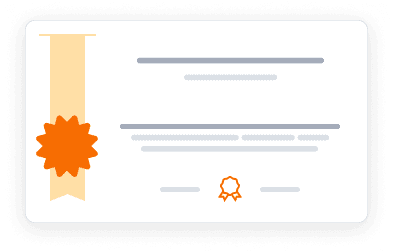This course is part of Paleografía y caligrafía de manuscritos hispánicos..
This advanced course in calligraphy and paleography embraces digital humanities approaches to provide a comprehensive learning experience of Hispanic manuscript culture. Students will practice calligraphy while simultaneously learning to read historical manuscripts that form part of the rich Hispanic documentary heritage. The curriculum presents six historical scenarios that contextualize manuscript production, with meticulous attention to setting and material selection to create a highly interactive learning experience with deep immersion in historical manuscript culture. Students will explore how beautiful medieval manuscripts were created, the materials used, the tasks performed in medieval chancelleries and notarial offices, and the graphic characteristics that defined books and private letters from the 16th to 19th centuries. The course examines which writing styles achieved the highest levels of perfection and legibility, the defining characteristics of manuscript book and document production in medieval and modern times, and the various public and private writing spaces that defined Hispanic historical documentary heritage. Through practical exercises in both reproduction (calligraphy) and transcription (paleography), participants will master advanced principles of calligraphic practice, paleographic methods for analyzing Hispanic manuscripts, and the rules, tools, and materials involved in each historical period. Designed for archives professionals, conservation specialists, professional calligraphers, and students interested in Hispanic manuscript culture, this course provides essential skills for working with historical documentary heritage.
4.3
(5 ratings)
6,836 already enrolled
Instructors:
Spanish
Español
What you'll learn
Master advanced principles of calligraphic practice in combination with paleographic transcription Apply methodologies to read and analyze Hispanic medieval and modern manuscripts in different historical contexts Understand the materials, tools, and techniques used in medieval scriptoria for manuscript creation Recognize document types and validation elements from historical chancelleries Identify characteristics of notarial documentation from the 15th-17th centuries Analyze judicial administration writing styles including courtly and procedural scripts Examine municipal administrative documents and their production processes Explore personal writing practices through historical letters, diaries, and accounting records
Skills you'll gain
This course includes:
PreRecorded video
Graded assignments, exams
Access on Mobile, Tablet, Desktop
Limited Access access
Shareable certificate
Closed caption
Top companies offer this course to their employees
Top companies provide this course to enhance their employees' skills, ensuring they excel in handling complex projects and drive organizational success.





There are 6 modules in this course
This course offers an immersive experience in historical calligraphy and paleography through six carefully constructed scenarios representing different contexts of manuscript production in Hispanic history. The curriculum examines the medieval scriptorium, exploring its organization, operation, and the characteristics of Caroline and Gothic book scripts. Students will study the royal chancellery as a center for document issuance, validation, and registration, learning about document typologies, writing styles, and validation elements. The course investigates notarial offices from the 15th-17th centuries, examining their functions, document types, and the evolution of notarial scripts including courtly, procedural, and chancery hands. Judicial administration writing is covered through exploration of Spain's modern justice system, chanceries, audiences, and tribunals, with focus on document typologies such as nobility certificates. Municipal administration writing practices are examined through council functions, administrative procedures, and document production. Finally, domestic writing explores the personal dimension of manuscript culture through accounting, correspondence, diaries, and personal calligraphy. Throughout each historical context, students learn both the paleographic skills to read documents and the calligraphic techniques to reproduce authentic letterforms.
El scriptorium medieval
Module 1
La cancillería: oficina de expedición, validación y registro documental
Module 2
Una oficina notarial: siglos XV-XVII
Module 3
El imperio de la escritura en la administración judicial
Module 4
Escritura y administración municipal
Module 5
Escribir en la casa
Module 6
Fee Structure
Individual course purchase is not available - to enroll in this course with a certificate, you need to purchase the complete Professional Certificate Course. For enrollment and detailed fee structure, visit the following: Paleografía y caligrafía de manuscritos hispánicos.
Payment options
Financial Aid
Instructors

5 Courses
Scholar in Archival Science and Written Culture
Dr. Diego Navarro Bonilla, a professor at Universidad Carlos III de Madrid, specializes in archival science, paleography, calligraphy, and the history of written culture. Holding doctorates in Documentation (UC3M) and Conflicts, Security, and Solidarity (University of Zaragoza), he directs the Master's program in Archives, Document Management, and Digital Continuity at UC3M. His research focuses on historical manuscripts, digital paleography, and the integration of archival practices with security and defense intelligence.

5 Courses
Historian and Expert in Archival Science and Intelligence History
Dr. Eduardo Juárez Valero, a professor at Universidad Carlos III de Madrid, specializes in archival science, paleography, Spanish history, and the history of intelligence services. With a doctorate in History from UNED, he also serves as the President and Principal Investigator of the Centro de Investigación de la Guerra Civil Española (CIGCE). His work spans from medieval documentation to the study of espionage and intelligence structures during the Spanish Civil War and beyond.
Testimonials
Testimonials and success stories are a testament to the quality of this program and its impact on your career and learning journey. Be the first to help others make an informed decision by sharing your review of the course.
Frequently asked questions
Below are some of the most commonly asked questions about this course. We aim to provide clear and concise answers to help you better understand the course content, structure, and any other relevant information. If you have any additional questions or if your question is not listed here, please don't hesitate to reach out to our support team for further assistance.



